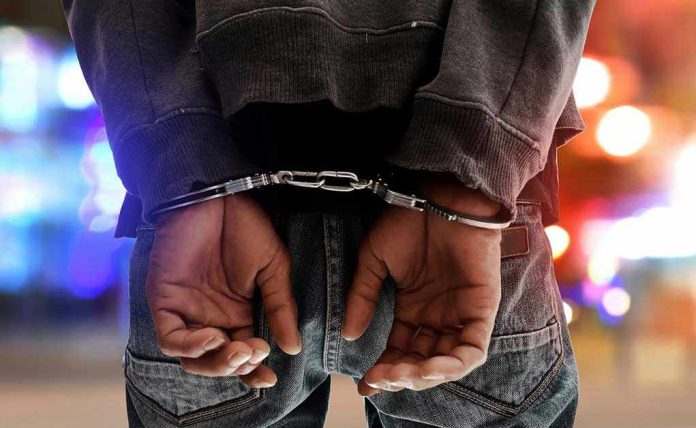
On the day a college football team should have been celebrating its seniors, the locker room turned into a crime scene—raising the question: what matters more, the safety of young athletes or the sanctity of the game?
Story Snapshot
- UAB offensive lineman David Mincey arrested for stabbing two teammates hours before final home game.
- Victims hospitalized with non-life-threatening injuries; game against USF played as scheduled.
- Incident triggers debate on institutional priorities, athlete safety, and crisis management in college sports.
- Game continues despite trauma, with several UAB players choosing not to participate.
Violence in the Shadows of College Football Glory
UAB’s football program, a symbol of resilience after a high-profile shutdown and subsequent revival, was stunned when an act of violence shattered the sanctity of its own facility. Hours before kickoff against the University of South Florida, offensive lineman David Mincey was arrested for allegedly stabbing two teammates at the UAB Football Operations Center. The victims survived, but the ripple effect rocked not only the locker room, but also the university’s leadership and the wider college football community.
Despite the severity of the incident, institutional machinery pressed forward. The game was not postponed or canceled; instead, it unfolded as scheduled at Birmingham’s Protective Stadium. Interim coach Alex Mortensen confirmed post-game that the wounded teammates were stable, even as several shaken players opted out of competition. This decision to proceed underscored longstanding tensions between upholding tradition and addressing immediate human needs within high-stakes college athletics.
Institutional Response: Balancing Safety, Reputation, and Revenue
The UAB administration moved quickly to contain the crisis. University police arrested Mincey, issued statements assuring no ongoing threat, and emphasized campus safety. Yet the optics were inescapable: as police concluded their investigation at the team facility, the community was asked to rally for senior day. The administration’s decision to play the game drew sharp scrutiny. For some, it signaled unwavering commitment to institutional obligations and athletic revenue; for others, it suggested a willingness to sacrifice individual well-being for the appearance of normalcy.
While the victims’ names and motivations behind the attack remain undisclosed, the immediate response set a precedent. Team operations continued, with those most affected expected to compartmentalize trauma and perform. Some athletes, unwilling or unable to reconcile the day’s events with the demands of the sport, exercised their agency by sitting out—a quiet act of protest or self-preservation, depending on perspective. The lack of publicized mental health resources or crisis intervention raises questions about what support, if any, is available to student-athletes after such traumatic events.
Deeper Questions: Culture, Oversight, and the Meaning of ‘Team’
Incidents of intra-team violence are exceedingly rare at this level of college football, where the concept of ‘brotherhood’ is relentlessly promoted. The stabbing at UAB exposes cracks in the idealized image of locker room unity and poses uncomfortable questions about oversight, stress, and the adequacy of conflict resolution mechanisms. Historically, sports safety experts have called for robust mental health resources, yet implementation often lags behind rhetoric. This event may prompt not just UAB, but programs nationwide, to revisit protocols for monitoring athlete well-being and intervening before tensions escalate into violence.
Institutional priorities are now under the microscope. Should games proceed when players are traumatized or in crisis? Some argue that maintaining the schedule honors commitments and provides stability; others contend it risks normalizing the minimization of trauma in pursuit of business-as-usual. The NCAA and conferences may now face pressure to clarify policies for crisis response, balancing the imperatives of safety, fairness, and competitive integrity. For UAB’s administration and coaching staff, the coming weeks will test their capacity for transparency, accountability, and genuine care for their athletes beyond the scoreboard.
Sources:
NBC Sports: UAB player stabbed two teammates before USF game, which proceeded as scheduled
CBS Sports: UAB football players stabbing team facility



